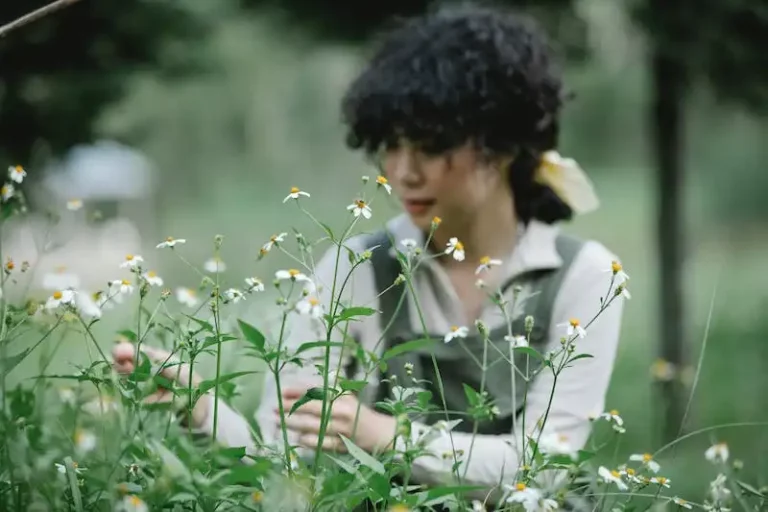Caring for a basil plant from the grocery store can be a great option if you enjoy gardening but don’t have the space or resources for a full-fledged garden. Basil is a popular herb that is used in various dishes, and it can be quickly grown in a small indoor or outdoor space. This article will discuss how to care for a basil plant you buy from the grocery store.
1. Verify the Plant
Before you buy the basil plant, verify that it is healthy. Look for a plant with green leaves and no signs of damage or disease. Also, check if it is a hydroponic plant, as these plants are usually better suited for indoor gardening due to their soil-free nature.
2. Begin Planting
Once you have purchased the basil plant, it’s time to begin planting. If the basil plant is potted, you can either leave it in the plastic container it came in or transfer it to a slightly larger pot with drainage holes. If you choose to transfer it, make sure to use well-draining soil that is suitable for potted plants.
3. Find the Ideal Spot
Basil plants require plenty of sunlight to grow properly. Choose a sunny spot, either indoors near a south-facing window or outdoors in a location that receives at least 6-8 hours of direct sunlight daily. Placing the plant near a windowsill is a great option.
4. Watering
Water the basil plant regularly, but make sure not to overwater it. Basil plants prefer moist, but not soggy, soil. Allow the top layer of soil to dry out slightly in between waterings. Be careful not to let the plant sit in standing water, as this can lead to root rot.
5. Caring for the Plant
Caring for a basil plant is relatively easy. Look for any signs of pests or diseases, and remove them promptly if you notice any. Pinch off any flowering buds that appear, as they can inhibit the growth of new leaves. Regularly trim the plant to encourage bushier growth.
6. Picking and Using Basil
You can start picking basil leaves once the plant has become established and rooted. Pick the leaves from the top of the plant, leaving a few on the bottom to ensure continued growth. Basil leaves can be used fresh, dried, or frozen for later use in cooking.
7. Some Extra Tips
- If unsure whether your basil plant is native to a garden or hydroponic, look at the roots. If the roots are growing in soil, it is a garden basil plant. If the roots grow in water, it is a hydroponic basil plant.
- A neat gardening hack is to propagate basil from supermarket basil plants. Cut off a healthy stem, place it in a glass of water, and wait until the roots grow. Then, transfer the rooted stem to the soil and care for it like a newly bought basil plant.
- When buying basil plants from growers, check the source and select the healthiest plant available. Also, make sure to follow the care instructions specifically for that plant.
- Remember that basil plants are annuals, and their growth will slow down or stop altogether once they have produced seeds. Therefore, it’s best to keep them vegetative by regularly picking the leaves and preventing them from flowering.
By following these steps and caring for your basil plant properly, you can enjoy a healthy and thriving herb that will enhance the flavor of your dishes. Happy gardening!
Picking the best basil plants from the grocery store
When it comes to growing basil, there are several options. While starting from seeds is a popular choice for many gardeners, buying a premade basil plant from the grocery store can be a convenient and time-saving option. It provides an instant source of fresh basil and eliminates the need to wait for the seeds to grow into fully matured plants.
Here’s a step-by-step guide on how to pick the best basil plants from the grocery store:
Step 1: Assess the plantsTake some time to examine the available basil plants. Look for healthy plants with vibrant green leaves that show no signs of wilting or yellowing. Avoid plants with brown spots or signs of insect damage. |
Step 2: Check the rootsCarefully remove the basil plant from its plastic pot and inspect the roots. Ideally, the roots should be well-developed, white or light in color, and well-distributed throughout the soil. Avoid plants with brown or mushy roots. |
Step 3: Assess the soilExamine the soil in which the basil plant is planted. It should be moist but not soggy. Avoid dry or overly wet soil plants, as they may indicate poor care. |
Step 4: Consider the growth habitTake note of the basil plants’ growth habits. Some varieties are bushy, while others are more compact. Choose the one that suits your gardening space and needs. |
Step 5: Consider the sourceFind out where the basil plants are sourced from. Locally grown plants are usually better suited to the region’s climate and growing conditions. |
Step 6: Follow care instructionsRead any care instructions provided by the growers or store. Follow these instructions to ensure your newly planted basil’s optimal growth and health. |
Step 7: Provide proper sunlight and waterPlace your basil plant in a sunny location, such as a windowsill, where it can receive at least 6-8 hours of sunlight daily. Water the plant regularly, keeping the soil consistently moist but not soggy. |
Step 8: Consider hydroponic optionsIf you don’t have access to outdoor space or prefer a more controlled environment, consider growing your basil plant hydroponically. This method uses water instead of soil and can be done indoors. |
Step 9: Keep pests awayRegularly inspect your basil plant for signs of pests, such as aphids or whiteflies. Use organic pest control methods or natural remedies to keep them at bay. |
Step 10: Harvest and enjoy your basilYou can start harvesting the leaves once your basil plant has grown sufficiently. Pinch off the top leaves to encourage bushy growth. Use the freshly picked basil in your favorite recipes. |
By following these steps, you can ensure that you pick the best basil plants from the grocery store and grow them into healthy, thriving plants in your garden or windowsill. Happy gardening!
How to care for basil plants
Knowing how to care for your basil plants is essential if you are a gardening enthusiast or love the taste of fresh herbs. Basil is a popular herb commonly used in various cuisines for its distinct aroma and flavor. Whether you have just bought a basil plant from the store or are growing one from the seeds, here’s what works best for keeping your basil plants healthy and thriving.
Planting basil: When planting your basil, whether newly bought or rooted from a grocery store, the first step is to pick a location that provides plenty of sunlight. Basil plants love sunlight, so placing them near a window or outdoors is ideal.
Soil and watering: Basil plants prefer well-draining soil rich in organic matter. Ensure the pot or container you use has drainage holes to prevent waterlogging. Water your basil plants regularly, keeping the soil moist but not overly saturated.
Temperature and humidity: Basil is a native plant to tropical regions and thrives in warm temperatures. Keeping your basil plants in temperatures between 70-90°F (21-32°C) is essential. They also prefer moderate humidity levels.
Pruning and harvesting: Regularly prune your basil plants by pinching off the top leaf clusters to encourage bushy growth. This will prevent them from becoming too leggy. Basil leaves are best picked just before the plant starts to flower for the most flavor.
Indoor and outdoor care: Basil can be grown both indoors and outdoors. If you keep your basil plant indoors, ensure it receives at least six hours of direct sunlight each day. Outdoor basil plants will require regular watering and protection from frost.
Hydroponic gardening: If you are a fan of hydroponic gardening, basil plants can thrive in a hydroponic system. The same care guidelines apply, but you will place the basil plants in a water-based nutrient solution instead of soil.
Common basil plant care mistakes: Overwatering, underwatering, and lack of sunlight are common mistakes that can harm your basil plants. Please give them the right amount of water and place them in a sunny spot. Your basil plants will thank you.
So, whether you are a seasoned gardener or a beginner, caring for basil plants is not difficult. Follow these steps, and you’ll enjoy a bountiful supply of this herb to enhance your culinary creations.



